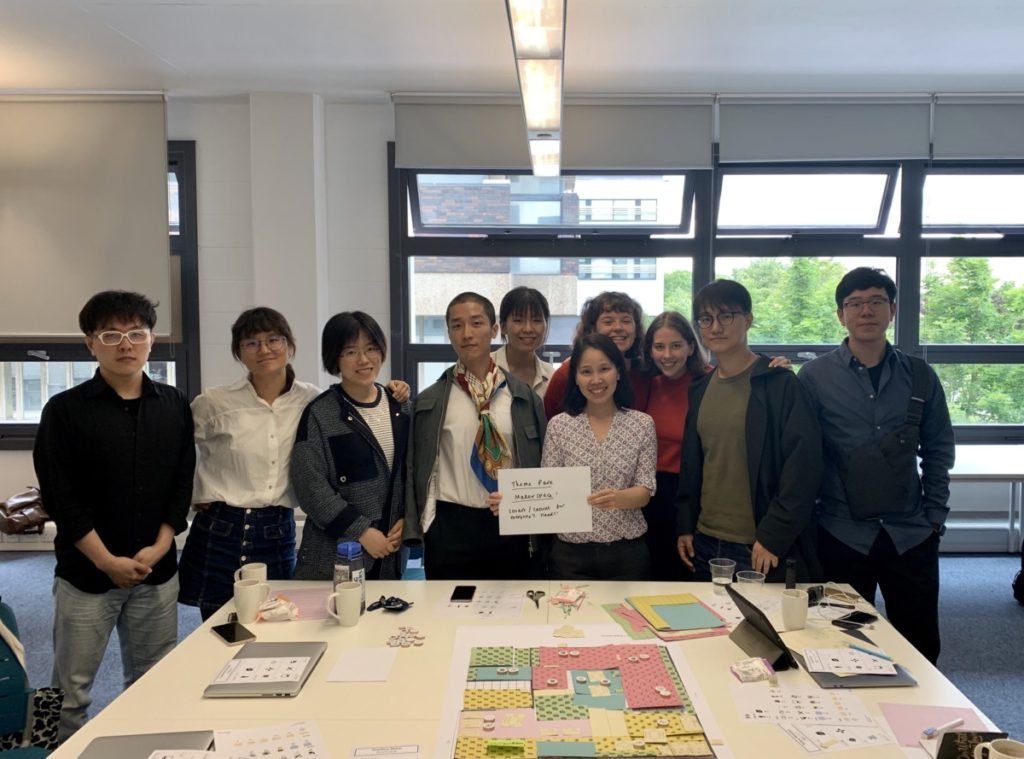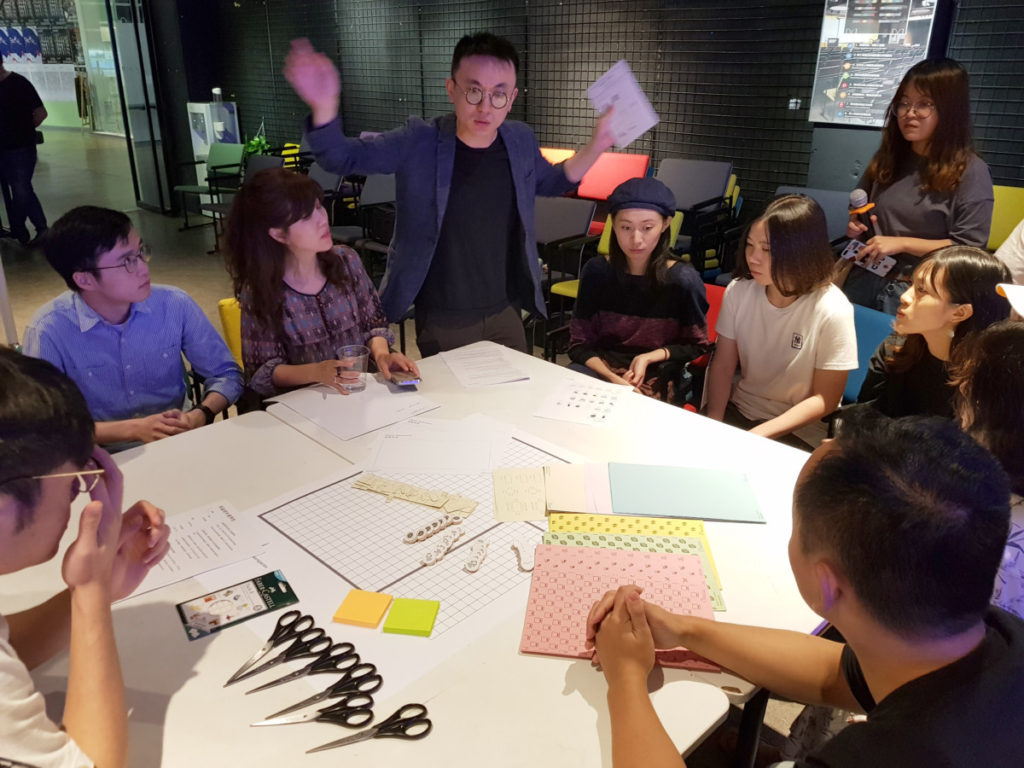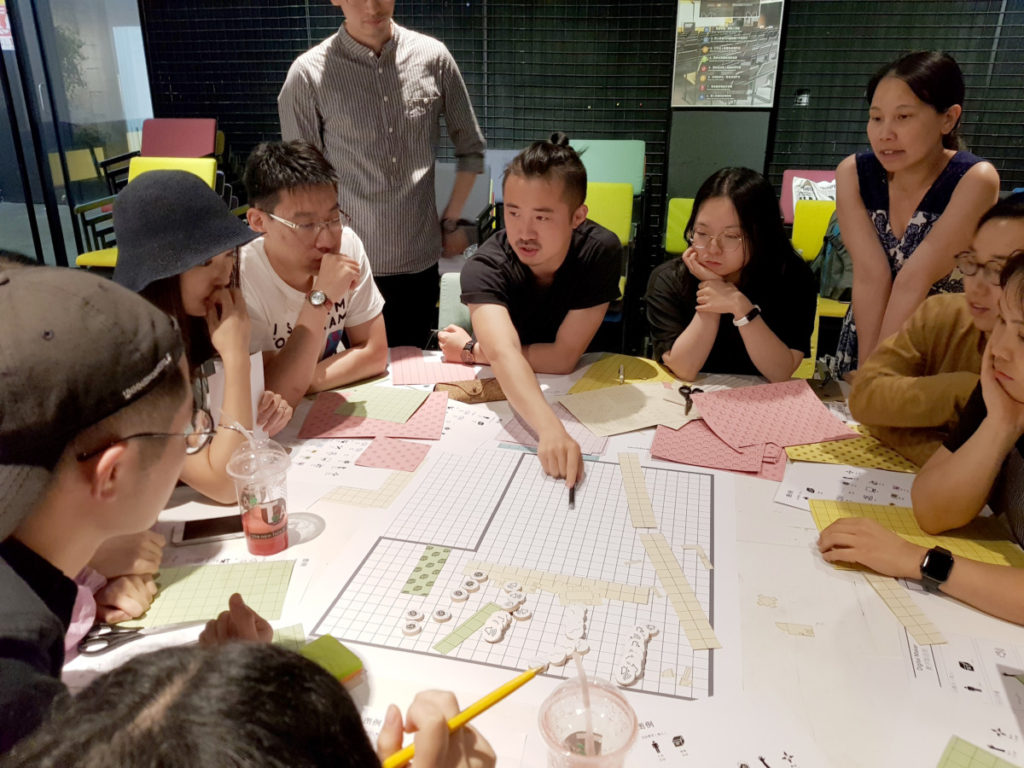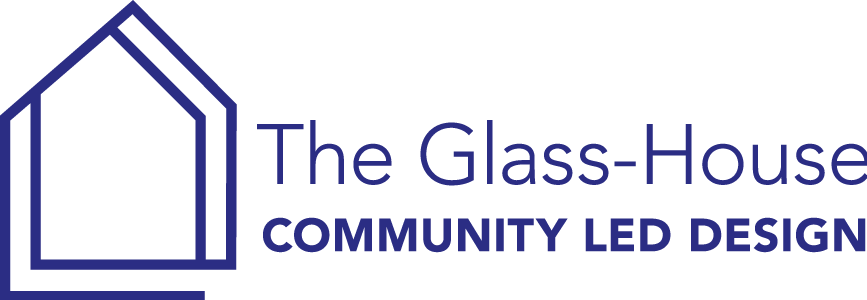Written by:
The reinvention of a Glass-House stalwart: Design by Consensus
By Grace Crannis, Sophia de Sousa and Myra Stuart
“Co-designing the game was quite an exciting experience. Working as a group, it was astounding how quickly we managed to brainstorm and prototype the entire game. My most important takeaway was the importance of having a shared language when designing collaboratively.”
Emma Newman, intern at The Glass-House

Recently, The Glass-House team had the opportunity to practice what we advocate, when the time came to reimagine a long-standing workshop for our current research project about makerspaces in collaboration with Brunel and Tongji Universities*. Our Design by Consensus workshop was designed back in 2006 to introduce people to the process of engaging a diverse group of stakeholders in designing a shared public space. As an interactive role play exercise, it was adaptable, and had been used in many contexts including working with communities on live projects, as a light-touch introductory workshop within higher education and in conference settings, and as a model to support collaborative research.
However, its reliance on text made it less appropriate for a project spanning the UK and China. We saw this as an opportunity to develop the concept in a more visual and playful way, changing scale and focus to relate the game to makerspaces, and taking on the challenge to co-design the new workshop activity and materials as a team.
Participants in our new Design by Consensus workshop are tasked with creating a shared vision for their fictional makerspace building, and with negotiating for space allocation within it. Each ‘player’ is assigned a ‘role’, such as building manager, professional maker or casual maker, with specific needs and preferences for private and communal working areas, social space and storage.
Here’s how The Glass-House team worked together to design it.
Design by workshopping
Initially, we sat down as a team to get the majority of the designing done over the course of a day, brainstorming a number of regular users of our imagined makerspace, who could become the basis for the roles in the game. We settled on basic icons to signify the different sorts of space they might need, simple tools, messy vs neat and loud vs quiet, and made game cards to represent each of these roles.
We then split into two working groups, each with a different focus. This turned out to be an efficient process of zooming in and out to consider the problem at different scales. As the day progressed, we developed a system of working separately until we encountered a barrier, before coming back together to brainstorm the problem.


As with any co-design processes we facilitate on the ground when working with communities, it was important to be clear about what we meant by words and terms, especially when working so quickly.
After developing the basic structures of how the game would operate, we went away and worked individually on developing more specific parts of the design, before sharing these and adapting what each other had produced.
As well as being a lot of fun, this co-design process enabled the strengths and differing perceptions of our whole team to be quickly incorporated into the process. When working in this way, we found we were capable of producing complex, cohesive resources quickly and efficiently. Crucial to the process was that it is collaborative, rather than competitive, and that whilst everyone involved had their own ideas which were sometimes conflicting, were able to work through them for the good of the overall process. Collaborative working can lead to stronger outcomes, and creative ideas that are more than the sum of their parts.
Roleplay with visitors from China at Brunel University

We then had the opportunity to trial the workshop with a number of students and academics visiting from our research partners, Tongji University in Shanghai, China.
Our visitors started their trip with a visit to two very different London makerspaces, a blog on which can be found here. The following day at Brunel University was designed to share research findings to date, and to explore the way makerspaces operate and the role they can play in relation to fostering creativity in communities. A key point was the extent to which makerspaces are important because of the intangible aspects of making, socialisation, engagement, and the creation of a sense of belonging.
For our workshop, the visitors were split into two groups and were asked to use our props to create a vision for their makerspaces, and to co-design the spaces within them from the perspective of the roles they had been given. It was interesting to observe the different ideas and challenges that arose in each group. Space to exhibit and sell work made in the space was considered important by both groups, but considerations of shared versus private space, and how to use the outside area, were treated very differently.


The discussion at the tables was lively and animated as participants argued for space allocation, and it was great to see the way the props were being used to test ideas. The initial task of writing a vision statement helped form a collective approach for each table and was something to refer back to once time was up. Our props did seem to allow for differing ideas to be expressed and negotiated, and helped participants explore the complexities of form, function and feeling within their imaginary makerspaces.
Taking the workshop to China



Just a few days later, the workshop was used in Shanghai, where our Chief Executive Sophia de Sousa regrouped with colleagues from Brunel University and Tongji University to explore the current and potential role of makerspaces in China. Working with a group of local Chinese workshop participants, we were quick to test whether our more visual and graphic workshop materials would work within a completely different cultural context. What emerged at the different tables had much in common with the outcomes of the Brunel workshop, but also exposed a raft of new considerations about makerspaces that were manifestations of the cultural and generational differences among the participants involved.
One of the great successes of the workshop for us was that one of the students who had been a participant at the workshop at Brunel felt confident to step into a facilitation role at this Shanghai workshop. We were also extremely pleased to be asked by Tongji University to share the materials for use with their students in the future.
The Glass-House is committed to constantly developing and testing approaches and tools, and to sharing them with others. We were keen to share this example of the evolution of our workshops and resources and to illustrate the power of co-design. In the spirit of our collaborative approach, this blog has been co-authored by Grace Crannis, Sophia de Sousa and Myra Stuart.
*Fostering creative citizens through co-design and public makerspaces is a three-year action research project in collaboration with Brunel University and Tongji University, funded by the Arts and Humanities Research Council. This project seeks to develop a novel and inclusive means of fostering creative citizens in China in a bottom-up manner through strategic use of co-design and public makerspaces. The project will produce bilingual resources that share experience and learning from the UK and China to help inspire future communities and makerspaces everywhere.


